Lots of preppers have at the center of their contingency plans a stash of food for long-term storage. This is no mere three-day supply for those of us who have been involved in the lifestyle for any length of time. We are talking about a store of food that will last 6 months to a year and even beyond.
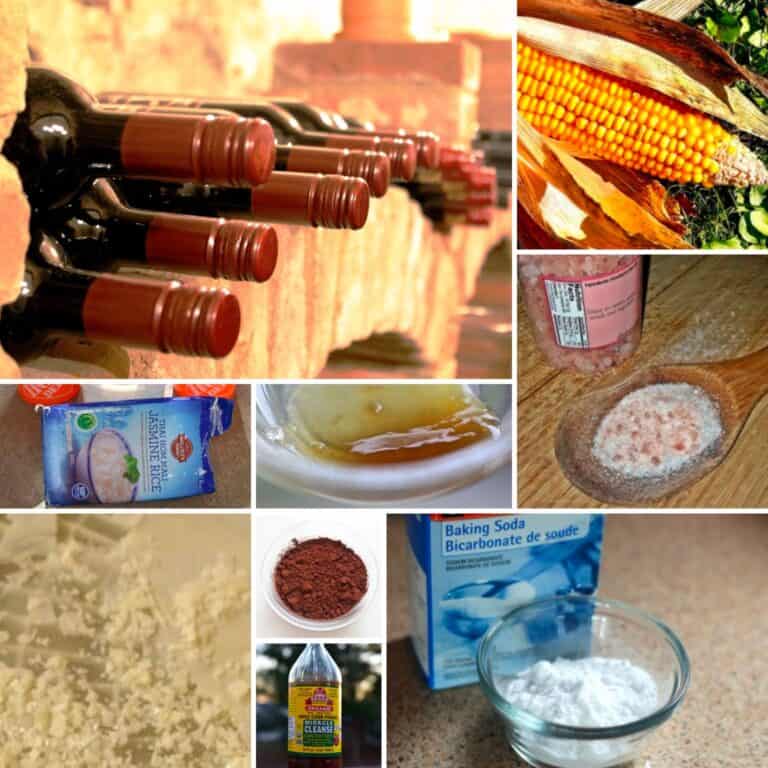
This is usually viewed as a benchmark prep by those who want to get ready for really bad times, but with this emergency stash of food comes logistical problems, namely the need to rotate our stocks to keep things fresh.
But what if you were trying to keep food for a truly long-term event? What if you wanted to keep food on hand for decades on end? Is it even possible? Surprisingly, the answer is a definitive “yes”.
Though comparatively few in number compared to most of the long-term storage staples we are all familiar with, there are some foods and other essential ingredients that can last longer than two decades.
Keep reading and we will tell you about 30 such foods along with all the other specifics that you’ll need to know about to keep them.
Table of Contents
Decades-Long Storage of Food is Possible
If you know anything about normal long-term storage of food, you might already be scoffing at the notion that it is even possible to keep food intact, much less edible, for a 25 year span or more.
But it is possible by selecting foods that are inherently suitable for a long shelf life and then optimizing those choices with correct storage techniques and technologies, your food will not only last but remain entirely edible and nutritious- with some prep beforehand, of course!
But as should be obvious by now, it is not just any food that can last that long; there are many foods that preppers can usually depend on- canned goods, MREs, frozen foods, etc.- that are totally unsuitable for the extreme shelf life we seek.
The list of foods that will work, though, run the gamut from common, everyday items to some unique things you might not have anticipated.
But these items all have a few things in common for our purposes, whatever they are: they will all depend entirely on good, sustained, and stable storage conditions and also on the right containers and packaging techniques.
Lacking either of the two or if either requirement fails or is interrupted, your ultra-long life storage plan will not succeed.
Storage Conditions are Everything
Any food that is going to last for a while must have proper storage conditions. Improper conditions greatly accelerate spoilage, or even make preservation impossible.
For our purposes, the most important conditions for our 25 year stored foods are temperature, humidity, light, and pest prevention.
We will discuss all of these in detail below.
Temperature
Temperature is perhaps the single most important factor when it comes to keeping food from spoiling quickly.
Compared to the simplicity of sticking some foods in the freezer and forgetting them or stocking your pantry shelves with food knowing you are going to use it within a couple of months, our long-term storage food requires some serious thought and effort into optimizing the storage temperature for maximum longevity.
To be perfectly clear, none of the items we are discussing today require freezing or true refrigeration to last. These are all shelf-stable “dry” storage goods.
That said, most of our chosen items will do best in a temperature range of 40-60 degrees Fahrenheit.
Generally, higher temps mean faster spoilage and shorter shelf life, while cooler temps slow the degradation of food over time.
Worse, temperature fluctuations can accelerate spoilage and degradation, even if the item in question remains in the “ideal” range.
Planning your storage location around a completely stable and assured temperature will do wonders for your success.
Humidity
Humidity is also super important when it comes to storage stability for most of our long-life goods. Humidity means moisture, and moisture means life.
For our mission, that means giving life to our enemies in the form of germs, insects, and other microorganisms, all of which can wreck our stash in short order if allowed to take hold.
For normal storage, humidity levels vary greatly depending on the item being stored, but once again for our purposes, you’ll want a more extreme approach: less is better.
Keep your stash below 40% relative humidity if you are going for an ultra-long shelf life, and consider that an upper maximum.
Light
If you are going to store something for 25 years then it’s best that you limit the exposure of your goods to any kind of bright or UV light. Light can be a catalyst for spoilage and should be avoided at all costs.
Wherever and however possible opt for truly opaque containers when available and darken the location itself with window tinting or blackout curtains and shades.
Don’t leave lights on inside your storage location, and do your best to prevent anything but momentary instances of light from reaching your food.
Even if your containers are truly opaque, light can still warm your food up and contribute to accelerated spoilage.
Pest Prevention
The last major consideration is pest prevention. Pest prevention is a must for long-term storage success.
Insects, rodents, and other creepy crawlies absolutely love food as much as you do, which means you have to take the necessary steps to insure that they and other pests don’t even get close to them.
Consider that a single mouse or rat can chew right through even heavy-duty containers, or a single, solitary female weevil with eggs can despoil an entire barrel of grain and you should start to get some idea of the stakes.
Accordingly, you must take proactive steps to not only prevent pests of any kind from reaching your food, but also identify and deal with any sort of activity if you should spot it.
Inspections on a routine basis are still essential, as well as keeping an eye out for any indications of pest activity in and around your storage site.
These should be followed up on immediately with countermeasures designed to deter, destroy and depopulate the threat.
Any food that is compromised should be disposed of right away, and further inspection performed because bad food might spoil other nearby food!
Hygiene and tidiness at all phases of the packing and storing operation along with sealing up the storage location against any possible pest intrusion will carry the day, here.
Use the Right Technology and Techniques
The right storage conditions, no matter how meticulous, won’t make much difference if our food is not packed properly in the right kind of containers.
Airtight containers, oxygen absorbers, desiccant packs, mylar bags, vacuum sealing, and freeze-drying are some of the technologies and techniques you can use to ensure that your chosen food stays safe and sound for years. We’ll discuss each briefly below.
Airtight Containers
Any container that is going to keep your food fresh and safe must be truly airtight. Nothing else will do.
It should also be opaque to keep out light or, if not, stored in a separate opaque container or kept in a dark location.
Your airtight container should be made of food-grade plastic, glass, or metal and can range from small mason jars to larger containers such as food-storage buckets or flexible containers like plastic bags. More on that below.
Oxygen Absorbers
Oxygen is necessary for life. We all know that. But knowing that it also informs us that oxygen is necessary for the biological and chemical processes that lead to spoiling and decay.
Oxygen absorbers are designed to do just as their name suggests: absorb oxygen from airtight containers, leaving little to no oxygen behind for use by various microorganisms.
These packets are easy to get and simple to use, and are indispensable for mass storage of things like grains, beans, and anything else you are likely to pack into container yourself.
Desiccant Packs
Desiccant packs work in much the same way as oxygen absorbers, but instead of absorbing oxygen they absorb moisture from the air inside your container.
This helps especially with foods that might contain trace moisture themselves, or ones that are extra vulnerable to rehydration.
The packets are usually made of silicon dioxide (silica gel) and come in a variety of sizes: the larger ones can absorb several times their weight in water, so you may not need more than one or two per container.
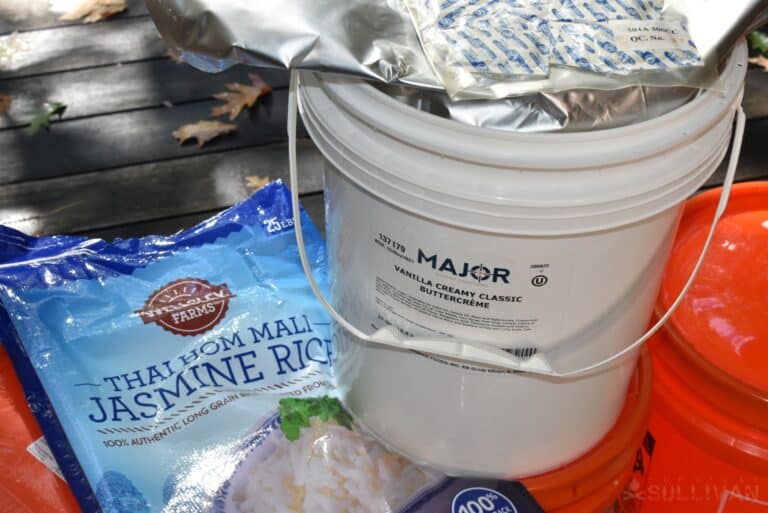
Mylar Bags
Specialized plastic bags that are ideal for food storage since they are almost entirely impervious to penetration by gasses and moisture when intact.
The name mylar is a trade name derived from polyester film’s official designation as “polyethylene terephthalate” so you can look for either when shopping for these bags.
This type of bag is especially useful for our needs since it can add an extra layer of security and thus longevity to our food.
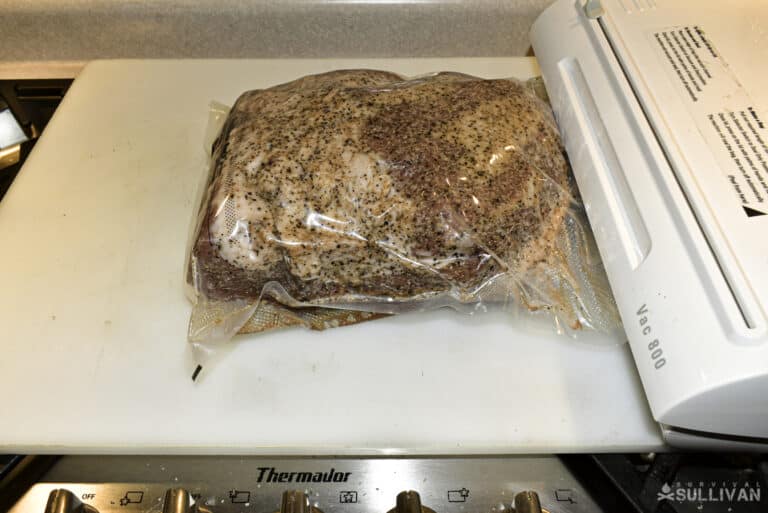
Vacuum Sealing
This method of closure has become popular in recent years and allows you to quickly and easily remove most of the oxygen from your storage container while also keeping moisture out as well.
Vacuum sealing machines usually work with heavy plastic or mylar bags but there are some models that function on hard containers or even, with adapters, on mason jars.
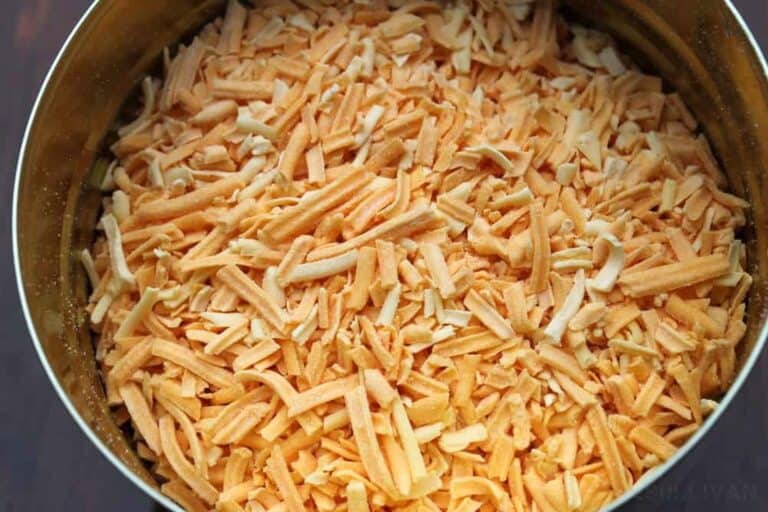
Freeze-Drying
The final method in our arsenal of long-term food storage is freeze-drying.
This process involves freezing the food and then exposing it to a vacuum that allows the moisture inside to evaporate, resulting in a shelf-stable product with extreme shelf life compared to other preservation methods.
Freeze drying is the most technically complex and still the most expensive, but for the ultimate assurance in food that will last a couple of decades at least nothing tops it: meats, fruits, veggies, and more can all be freeze-dried successfully and stored easily.
And that’s it. Using the right equipment and techniques combined with good storage conditions means you can easily expect the foods in the next section to last for 25 years or more.
30 Foods That Last 25 Years
1. Salt
Salt is fundamentally necessary for life, and also a fundamental ingredient in basically every recipe known to man.
It has a host of other uses besides, and is itself an important resource for food preservation. Shelf-life indefinite; store in an airtight container and keep it safe from moisture.
2. Sugar
Another fundamental ingredient, sugar can sweeten up almost any dish and is an excellent way to store bulk calories easily. It can clump and harden over time, but if stored properly it should still be sweet and usable after 25 years.
3. White Rice
A true staple food around the world, rice is cheap, has plenty of protein, and has a well-rounded nutritional profile.
Makes sure you are keeping white rice, not brown, as brown spoils much quicker. Kept in a cool, dry place totally sealed and protected from pests it will easily last 25 years or more.
4. Dried Beans
Long a true survivor staple, beans are a great source of protein and other essential nutrients, and an important part of any long-term food storage plan.
Dried beans will stay edible for many decades, but when they go “stale” they will harden to the point that they need soaking and boiling to soften them again. Work fine in small containers, bags, or barrels. Protect from pests at all costs!
5. Oats
Oats have a lot going for them: they are nutritious, filling, and full of complex carbohydrates. Can be stored in airtight hard containers or mylar bags to keep them safe from pests, humidity, and moisture.
Don’t store steel-cut and other kinds of oats or oatmeal here; if you want a long shelf life rolled oats are the way to go as they have been known to last in excess of 30 years!
6. Honey
Honey is a famous survival food since it is essentially pure sugar and pretty much never spoils. It may crystallize over time, but that can be reversed with a little bit of gentle, sustained heat.
It will still be just as sweet and totally edible after 25 years in storage as the day you bought it. Protect it from light and pests and you’ll have no issues at all.
7. Corn Starch
Corn starch is a great way to add bulk and texture to various recipes and foods. Kept totally dry it has a long shelf life of 20 years at least, and much longer is totally doable in proper conditions.
It is usually bad much sooner due to constant use and exposure to heat and humidity in the kitchen.
8. Corn Syrup
As a replacement or supplement to sugar, corn syrup has a log going for it. Easy to store, cheap, and a great option for bulk calories, it has a shelf life of in excess of 25 years so long as the seals are intact and you keep it away from light.
9. Corn
Lots of corn products on this list, and with good reason! Corn is a fantastic resource for long-term storage, and it comes in many forms.
Corn kernels can be dried out for an exceptionally long shelf life and kept in bulk formats like any other grain.
A 30 year shelf life is possible if oxygen is removed from the container and moisture control is assured.
10. Bouillon Cubes
These humble cubes of flavor are a great way to season up any dish, soup, or stew. When stored properly they can last for decades without spoiling, making them an excellent pantry item.
Though they come in tidy little packs or bottles and are individually foil-wrapped, don’t count on that.
Keep them in a better and truly airtight container and away from heat and humidity to ensure your supply stays fresh.
11. White Vinegar
Vinegar is essential in the kitchen, and white vinegar is particularly is itself useful for long-term food storage.
The acidity of the vinegar helps to preserve many foods and it has plenty of uses around the house. Kept in a sealed bottle and out of sunlight will easily keep for 25+ years. Keep an eye on evaporation.
12. Apple Cider Vinegar
Like white vinegar above, apple cider vinegar is a great long-term storage item. It has a milder flavor and can be used for many different culinary applications in all kinds of recipes, and it will also last about 25 years in the proper conditions.
Once again, make sure the bottle starts and stays sealed, and keep it out of direct light, especially sunlight.
13. Cocoa Powder
Cocoa powder is a constant in all kinds of desserts, but it is also surprisingly nutritious. It’s a great source of antioxidants and makes a delicious and fortifying hot chocolate.
When stored properly it can last more than 25 years, though the flavor might start to falter a little.
Go ahead and stock up, but keep the containers sealed unless you want to transfer it into a better container yourself. As you might expect, moisture is enemy number one, here.
14. Ghee
If you’ve never heard of ghee, that’s okay; most other people haven’t either. Ghee is a type of clarified butter favored in Indian cuisine, but it has gained more traction as health food and cooking oil over time.
In terms of storage, it may be one of the best options for long-term shelf life. Unopened ghee containers have been known to last 30+ years when kept away from light and heat.
15. Instant Potatoes
Instant potatoes, be they powder, flakes or chipped, are a great way to make a tasty side in an, well, instant.
Easily stored and with an incredibly long shelf life of 25 years or more as is, they are a great resource for those who want to stock up on cheap bulk calories for the future.
Consider placing them unopened in better, sturdier containers since the usual packaging is pretty flimsy an easy access for rodents and their sharp teeth.
16. Powdered Milk
Powdered milk is a good, if contentious, inclusion on our list. Learn How to Make Powdered Milk at Home from our other article.
Nominally, a few years or a little more is all you can reliably expect from powdered milk under “normal” storage, since it is notorious for going rancid (thanks to the fat content), absorbing moisture and molding, or just turning nasty.
But strict attention to maximally effective storage has shown you can often squeeze a couple of decades out of it.
Whether or not this is worth the trouble is up to you, but mylar bags in conjunction with oxygen absorbers and fanatical devotion to dark, cool, dry storage means it will last!
17. Whole Grains
Aside from oats, lots of other whole grains can serve wonderfully. Wheat, barley, and rye are just a few of the grains that can store for decades when kept properly.
Airtight containers, moisture control, and pest protection are the keys, and make sure you have a way to inspect bulk storage like barrels for the latter: many a prepper has been surprised by a heaving infestation of insects at the worst possible time.
18. Tea
It won’t give you any calories, but it will give you a boost and help you calm down. Tea is already totally dry, but still must be protected from light and moisture to survive for the long haul.
Airtight, opaque containers and oxygen absorbers work wonders here, and will help your tea last for 25+ years with no problem at all.
You can also store loose-leaf tea in Mason jars and the like; just make sure they are completely sealed when not in use!
19. Instant Coffee
Like tea, coffee is not a source of calories but it is a “luxury” item that will help you get ready for the day.
Instant coffee is a particularly good option since it’s already processed into a long-life powder form and requires minimal preparation.
Make sure that its container is completely sealed or else transfer it into your own vacuum-sealed bag or container with an oxygen absorber, otherwise you will find yourself with stale and unpalatable results.
20. Pemmican
Pemmican is not a beef jerky brand: real pemmican is a combination of dried, ground, and fat-cooked meats that were used by the American Indians and later colonists from Europe to carry easily transportable, highly filling nutrition through the long trek across America.
The right components will give you a high-fat, high-protein ratio that can last for decades when made and stored properly. Screw up and it will spoil in months. Consider buying it from a trusted vendor and storing it as is, versus making pemmican yourself.
21. Hard Salted Meats
Most preppers are well aware of the fact that salt can be used to preserve meat for long-term storage.
But for extreme-life storage, meat can be repeatedly packed in deep salt, switching out the resulting “slush” until every trace of moisture has been drawn out.
The resulting, uh, product is as hard as concrete and completely inedible until it is rehydrated, but it will last and last! You can get 20 years from hard salted meat so long as it is protected from moisture and 25 or more years with extra care paid to other storage conditions.
22. Hardtack
Hardtack is a well-known historical food item, infamous for its blandness and inedibility, but what you might not know is that it is still produced today! You can even make hardtack yourself.
This simple mix of flour, water, and (sometimes) salt is baked until hard, hence the name.
It’s a great source of calories and basic nutrition for long-term storage, one that will last for many decades. Consider softening it up with broth, soup, or a little water prior to eating.
23. Wine
Everyone knows that good wine gets better with age, and in the right environment wine can last for centuries! Wine is great on its own, but consider it is an important source of calories, too, in a pinch.
If you make your own wine, make sure your bottles are tightly corked, stored at a cool temperature, and away from light. You do not need to check on them often at all, and you should have no problem many, many decades from them.
24. Liquor
Like wine, most liquors have no trouble whatsoever lasting for decades on end in storage as long as they are protected from light, evaporation, and contamination.
25. Soy Sauce
Soy sauce is a super salty fermented condiment, and it lasts essentially forever if uncontaminated! Make sure it is stored away from light and heat for maximum longevity. Factory-sealed bottles are best for this purpose.
26. Dried Spices
Spices have an important role to play in giving your food flavor and preventing burnout during a survival situation.
Most dried herbs and spices will last for 25 years or longer if stored in airtight opaque glass containers, and protected from heat and moisture.
Many herbs and some spices will lose potency in this time, but still be safe and flavorful.
27. Baking Soda
Another kitchen staple, baking soda is one of those items that you can buy in bulk and keep on hand for many years.
It has an indefinite shelf life if stored properly. A cool, dry environment is essential to its longevity.
Consider repackaging carefully into a better container than the cheap plastic or cardboard tube it comes in, as these tend to degrade quickly and let moisture in over time.
28. Maple Syrup
The delicious maple syrup seems so indulgent that it doesn’t deserve a spot on our list, but the opposite is actually true.
Genuine maple syrup has a shockingly long shelf life when in a sealed bottle and is protected from moisture, light, and heat. It can last for 25 years when stored correctly, and that includes its nutritional values.
It will be quite a comfort when whipping up some simple bread or baked goods, and also pack on lots of extra calories!
29. Pasta
You know them, you love them. Dried pastas are prepping mainstays, you know that, but what you might not know is just how long they really can last.
Placed in an airtight container with oxygen absorbers and kept away from moisture, pastas can last for decades on end.
Many preppers recommend checking them occasionally for signs of age, contamination, or pest problems, but it is generally safe to use pastas that are more than two decades old. Expect their texture to be a bit off, but they will be fine otherwise.
30. Freeze-Dried Food
As we talked about above, freeze-drying is an involved process technologically but it yields the longest possible shelf life for all kinds of foods.
Meats, vegetables, fruits, and more can be freeze-dried and stored for 25 years or more, as many commercially available survival rations and camping meals will show.
Whether you make it yourself or buy it, make sure your freeze-dried foods are stored in airtight bags (with oxygen absorbers if needed) and kept away from moisture, light, and heat.
Choose the Right Foods When Preparing for the Long Haul
As you can see from the list above, there are a variety of foods that have extraordinary shelf-lives when we do our part to keep them, and a few have nearly indefinite shelf-life.
These food items will help you to sustain yourself during a truly long-term emergency or disaster situation, or just ease the constant burden of rotating your supplies.
Are there any super-long life foods we forgot or left off? Have you had any experience with other foods that lasted way longer than you expected? Do let us know in the comments.
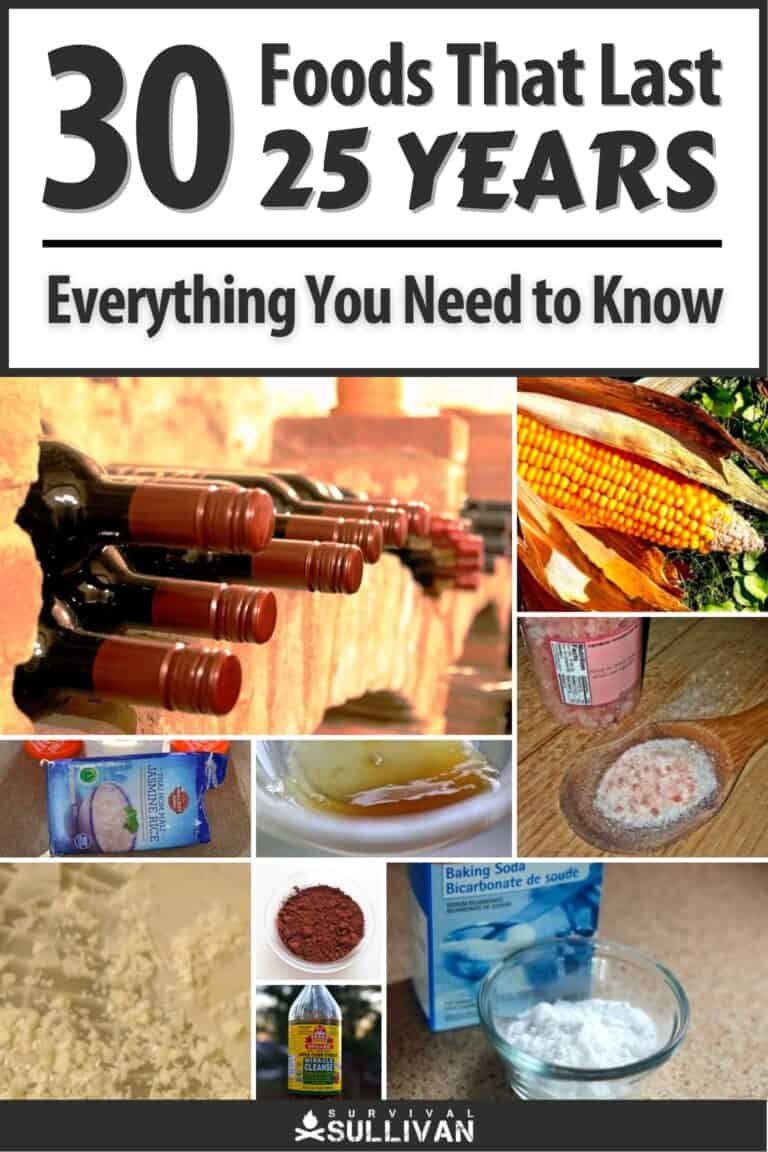

Tom Marlowe practically grew up with a gun in his hand, and has held all kinds of jobs in the gun industry: range safety, sales, instruction and consulting, Tom has the experience to help civilian shooters figure out what will work best for them.

“Don’t store steel-cut and other kinds of oats or oatmeal here; if you want a long shelf life rolled oats are the way to go”
Rolled oats are oatmeal. And steelcut oats are even less processed and should last longer. Whole groats would last the longest. What did you really mean to say here?
Curious if the oxygen/moisture absorbing packs/cylindrical containers i find inside my med bottles could be of use to help store foods… I’ve been saving them for a while…
Before storing rice etc., a good idea is to put the bags in the freezer for a few days, it will kill the weevils (all grains have weevils).
This eliminates the surprise friends when you open the container later.
Ask me how I know.
Hoping that this contributes to your comment / thread – Not sure if this is true for rice, but some weevils “wait” for the “winter freeze” / thaw and then hatch out. I learned from grandma to freeze, then thaw wait a week or two depending on type of weevil, grain or product (i.e. prepacked cake mix’s, refined flour, corn meal, etc.), and storage/room temp – and the freeze again, which kills any developing and hatching weevils. With corn meal, you have to watch this stuff, as the corn oil will still go rancid (one reason she often just as often left it in the freezer)
I agree with putting rice in the freezer to kill weevils. The only problem I ever had with weevils in the pantry was with organic pasta! Pest control said that because no pesticides are used in organic gardening, weevils are almost always present. Love organic foods but be more cautious when storing them…